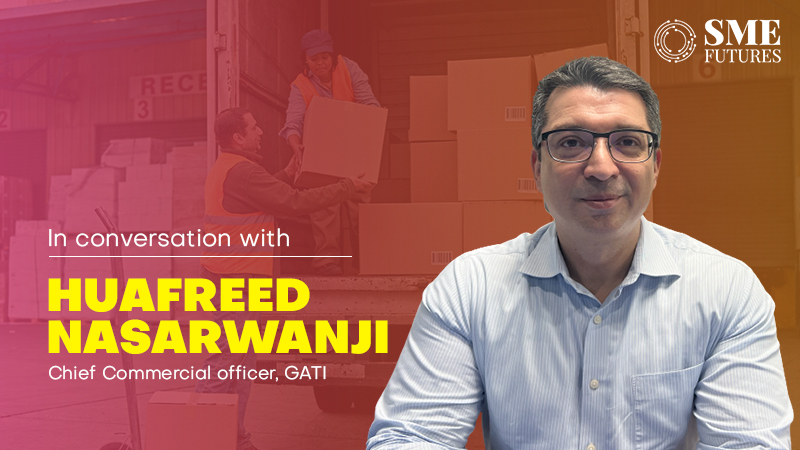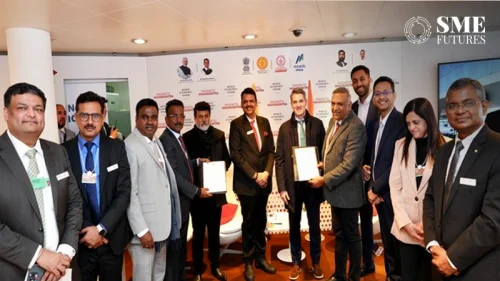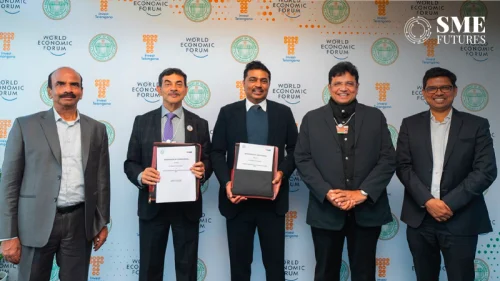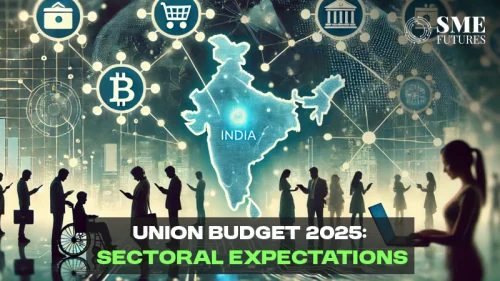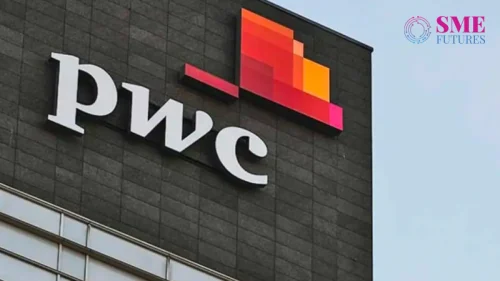For supply chain management and infrastructure development, logistics have remained a weakness. Till now, the cost of logistics in India are high, standing at 14 per cent of the GDP. This figure is on the higher side when compared to other developed nations like Germany or the US, which are at 8 per cent and 9.5 per cent respectively. Even the average logistics cost as per GDP among the BRICS nations is 11 per cent. Having said that, in the Logistics Performance Index 2018, India was ranked at 44.
Currently, there are various issues that are plaguing the Indian logistics sector, including the unorganised sector. Now, India intends to raise its LPI ranking to 25 and bring down its logistics cost from 14 to 8 per cent in the next five years.
Broadly speaking, India has a long way to go. However, logistics stakeholders like Huafreed Nasarwanji, Chief Commercial officer at GATI Ltd., while talking to SME Futures, highlights the fact that the National Logistics Policy along with PM GatiShakti Yojna, if implemented correctly, can be the gamechangers for the Indian logistics sector.
Edited excerpts
India ranks 44th in the Global Logistics Performance Index. According to you, what more needs to be done to improve this ranking?
Well, improving our ranking in the Global Logistics Performance Index requires a multi-pronged approach which needs to take into account infrastructure, operations, tech competencies and human skillsets.
With the roll-out of the PM GatiShakti National Master Plan (NMP) for developing multimodal connectivity infrastructure and the National Logistics Policy (NLP), the government is moving in the right direction. The NMP will enhance logistics efficiency in a big way by reducing logistics costs and by ensuring seamless connectivity across multiple modes of transportation.
Also Read: Nish Hair: This Indian hair brand is making a way for hair extensions in India
The launch of the NLP will set the road map for developing a comprehensive logistics ecosystem. The NLP also aims to improve the regulatory interface as well as to facilitate standardisation and interoperability with Integrated Digital Logistics Systems. One of the goals of the government is to decrease the logistics cost from 13-14 per cent of the GDP to a single digit by 2030. Once implemented appropriately, the NMP and the NLP will put India among the top 25 countries in the World Bank Logistics Performance Index.
Speaking of the NLP, how does this policy framework help the SMEs in the ease of doing business?
As the National Logistics Policy envisages an integrated, cost-efficient logistic and tech-enabled ecosystem, it will definitely help the small businesses to expand their markets effectively and sustainably. The integrated logistics policy will reduce the spoilage of goods during storage and movement as well as streamline transportation.
What will be the key trends in the logistics sector in 2023?
The pandemic’s waves have exposed the vulnerabilities and inefficiencies in the supply chain operations. Therefore, as the economy is gradually reviving, in 2023, the focus of the industry will firmly be on building supply chain resilience. A key emerging trend will surely be a more aggressive adoption of digital technologies to boost operational efficiency. There will be a far greater adoption of data-drive technologies to automate repeated operations, boost traceability and for route optimisation as well. As customers are increasingly becoming more demanding on delivery competencies, the adoption of new-age technologies such as artificial intelligence, big data, IoT, cloud, automation, etc. is set to grow.
Also Read: Indian real estate remained resilient in 2022; What is in store for it in 2023?
Another key trend which will capture the logistics narrative will be environment sustainability. As the logistics industry accounts for a significant share of carbon-emissions and global greenhouse gas emissions, the process of decarbonising operations will gain further momentum. The use of renewable energy is also set to grow further.
Personalisation or customisation in logistics services, how is this combination a win-win situation for both the logistics partner and the customer? How has it benefited GATI?
At GATI, we continue to prioritise the MSMEs and the retail businesses. We are working towards strengthening our service offerings deeper into the key markets and catering to the growing demands of the retail and SME sectors.
We offer customised logistic solutions for SMEs. Our service delivery points are strategically located close to the MSME clusters and offer a bouquet of services such as pick-ups, next day deliveries, etc. We have exclusively partnered with the SME Chamber of India as its preferred logistics knowledge partner.
How can the logistics business handhold small businesses in terms of footprint expansion? What initiatives does GATI have in place for this?
Logistics companies can play the role of a key growth enabler for SME businesses. Logistic service providers with their stronger warehousing networks can help SMEs in holding their inventories nearer to their target markets. Logistic companies can lay the foundation for the growth-focussed SMEs so that they can expand their markets across the country.
At GATI, we offer a spread-out distribution network across India for SMEs to scale their businesses sustainably and grow exponentially. We act like a knowledge partner for the SMEs, sharing strategic market inputs with them. Thanks to our end-to-end service assistance, a small business owner from Punjab can expand her/his footprint to the North-Eastern states efficiently.

